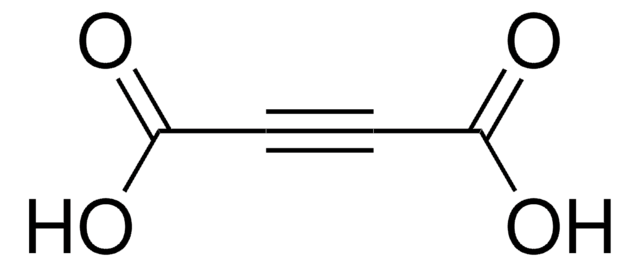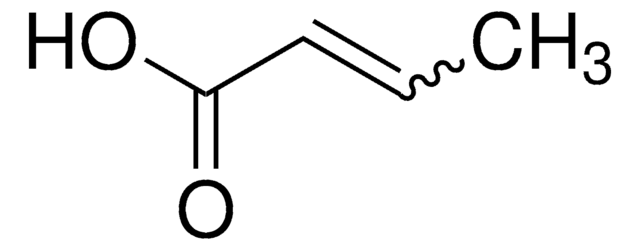Alle Fotos(3)
Wichtige Dokumente
303666
2-Butinsäure
98%
Synonym(e):
Tetrolsäure
Anmeldenzur Ansicht organisationsspezifischer und vertraglich vereinbarter Preise
Alle Fotos(3)
About This Item
Lineare Formel:
CH3C≡CCO2H
CAS-Nummer:
Molekulargewicht:
84.07
EG-Nummer:
MDL-Nummer:
UNSPSC-Code:
12352100
PubChem Substanz-ID:
NACRES:
NA.22
Empfohlene Produkte
Qualitätsniveau
Assay
98%
Form
solid
mp (Schmelzpunkt)
78-80 °C (lit.)
Funktionelle Gruppe
carboxylic acid
SMILES String
CC#CC(O)=O
InChI
1S/C4H4O2/c1-2-3-4(5)6/h1H3,(H,5,6)
InChIKey
LUEHNHVFDCZTGL-UHFFFAOYSA-N
Verwandte Kategorien
Allgemeine Beschreibung
The rotational spectrum of 2-butynoic acid was measured by pulsed supersonic-jet Fourier transform microwave spectroscopy.
Anwendung
Synthon employed in a variety of reactions, including cycloacylation of phenols to flavones and chromones, and cyclization to γ-butyrolactones.
Signalwort
Danger
H-Sätze
Gefahreneinstufungen
Eye Dam. 1 - Skin Corr. 1B
Lagerklassenschlüssel
8A - Combustible corrosive hazardous materials
WGK
WGK 3
Persönliche Schutzausrüstung
Eyeshields, Faceshields, Gloves, type P3 (EN 143) respirator cartridges
Hier finden Sie alle aktuellen Versionen:
Besitzen Sie dieses Produkt bereits?
In der Dokumentenbibliothek finden Sie die Dokumentation zu den Produkten, die Sie kürzlich erworben haben.
Kunden haben sich ebenfalls angesehen
Almost free methyl top internal rotation: Rotational spectrum of 2-butynoic acid.
Ilyushin V, et al.
Journal of Molecular Spectroscopy, 267(1), 186-190 (2011)
gamma.-Alkylation of 2-butynoic acid. Route to controlled prenol homologation.
Pitzele BS, et al.
The Journal of Organic Chemistry, 40(2), 269-270 (1975)
Jie Chen et al.
The journal of physical chemistry. B, 112(26), 7794-7802 (2008-06-06)
The solution behavior of a model compound, tetrolic acid (TTA), is studied via molecular dynamics simulations in four organic solvents. The results suggest that strong interactions between TTA and solvent molecules (ethanol or dioxane) prevent the formation of carboxylic acid
S Parveen et al.
Chemical communications (Cambridge, England), (12)(12), 1531-1533 (2005-03-17)
The application of FTIR spectroscopy to concentrated solutions of tetrolic acid shows, for the first time, a direct relationship between molecular self association in solution and H-bonded motifs in the subsequently crystallised solid phases.
I A Mjör et al.
Journal of dental research, 61(8), 967-972 (1982-08-01)
Adhesive bonding of resins to dentin surfaces requires the removal of the layer of debris caused by the cutting. Certain isotonic acidic solutions can do this rapidly. Five solutions were evaluated using cell cultures and pulp studies in monkeys. At
Unser Team von Wissenschaftlern verfügt über Erfahrung in allen Forschungsbereichen einschließlich Life Science, Materialwissenschaften, chemischer Synthese, Chromatographie, Analytik und vielen mehr..
Setzen Sie sich mit dem technischen Dienst in Verbindung.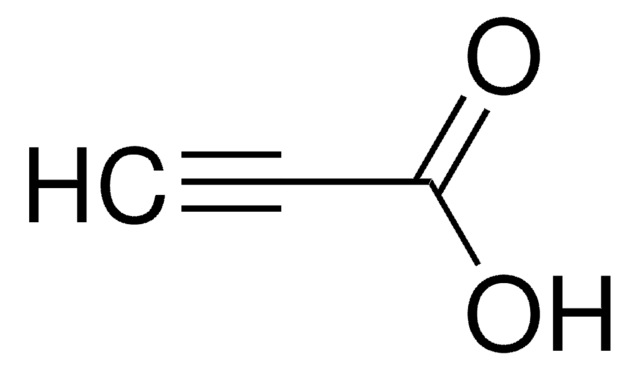
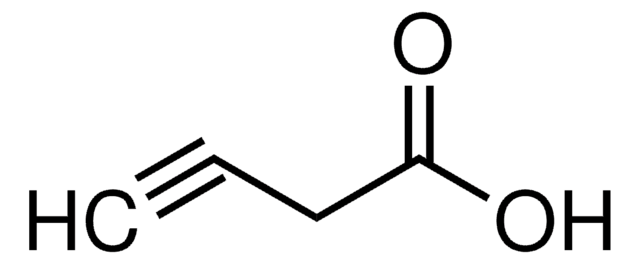
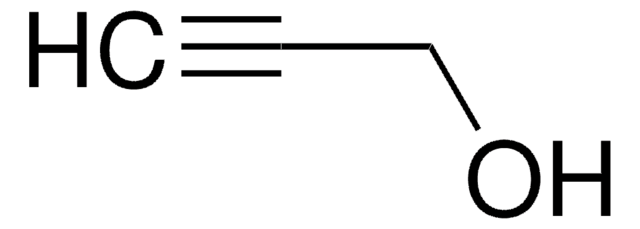

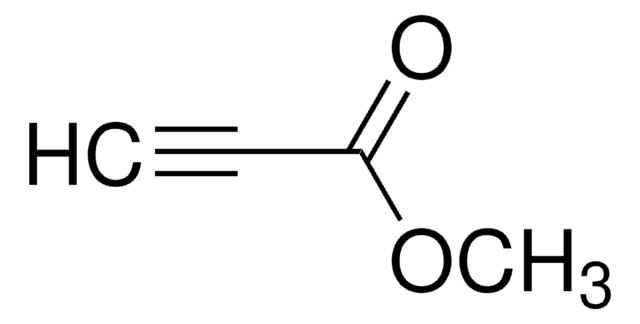
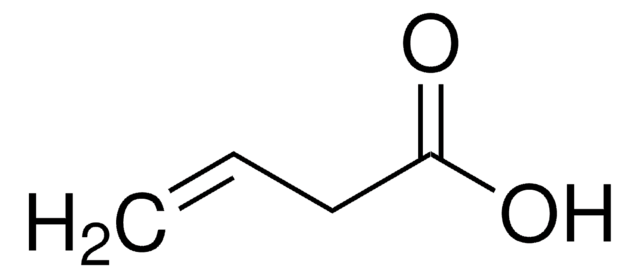

![1,8-Diazabicyclo[5.4.0]undec-7-en (1,5-5) 98%](/deepweb/assets/sigmaaldrich/product/structures/120/564/5b373e23-1624-489c-8efb-692de0f96ffb/640/5b373e23-1624-489c-8efb-692de0f96ffb.png)



